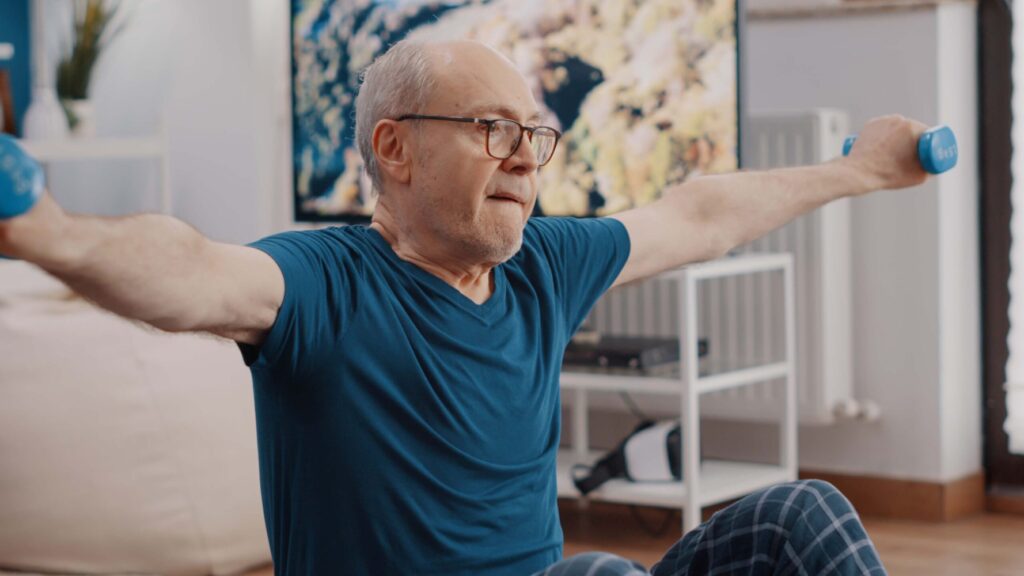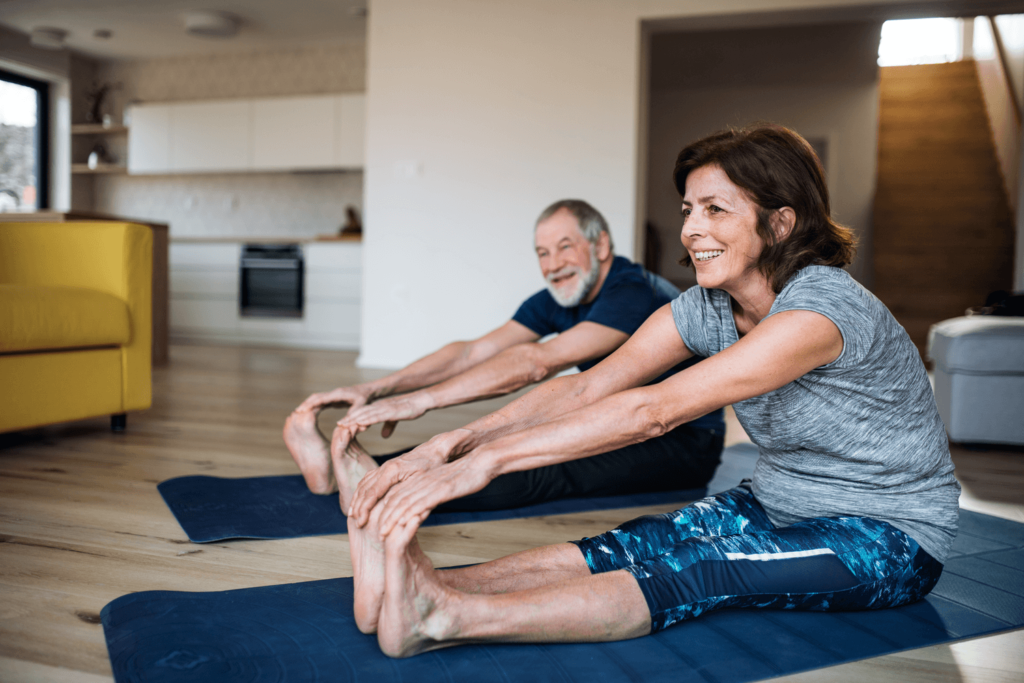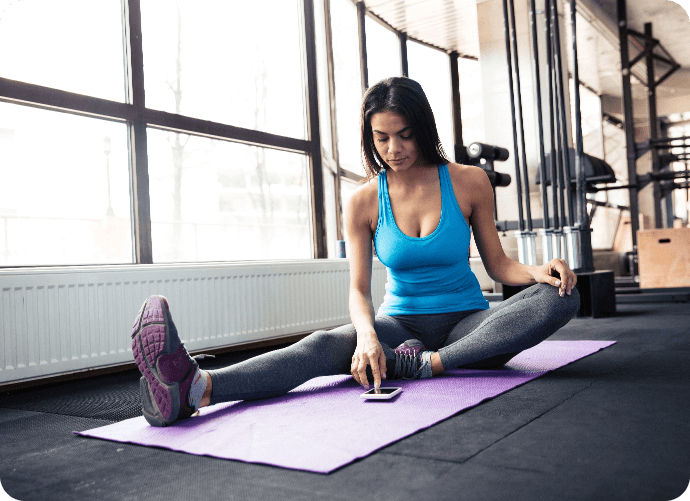January 16, 2024
Welcome to the ultimate guide on creating the best physical therapy Home Exercise Program (HEP). Whether you’re recovering from an injury or looking to improve overall wellness, a well-designed home exercise program can be a game-changer.
In this comprehensive guide, we will walk you through everything you need to know to create an effective and personalized home exercise program. From understanding the benefits of physical therapy exercises to learning how to assess your own fitness level, we’ve got you covered.
Not only will we provide step-by-step instructions on selecting and performing the right exercises, but we will also offer valuable tips on how to stay motivated and track your progress. Our goal is to empower you to take control of your own rehabilitation or fitness journey from the comfort of your own home.
With expert insights and evidence-based information, you can trust that this guide will provide you with the knowledge and tools to create the best physical therapy home exercise program tailored to your specific needs. Get ready to start your journey towards improved health and well-being today.

Importance of a Home Exercise Program (HEP) in Physical Therapy
A home exercise program is a crucial component of physical therapy. It plays a significant role in the recovery process, helping individuals regain strength, flexibility, and mobility. By performing exercises at home, patients can continue their rehabilitation outside of the clinic, accelerating the healing process and promoting long-term recovery.
One of the key benefits of a home exercise program is convenience. Many individuals find it challenging to make regular visits to the clinic due to time constraints or transportation issues. By having a structured program to follow at home, patients can ensure they are consistently engaging in therapeutic exercises, even on days when they are unable to make it to the clinic.
Additionally, a well-designed home exercise program allows patients to take an active role in their own recovery. It empowers individuals to regain control over their health and well- being, instilling a sense of ownership and responsibility. This sense of agency can have a positive impact on motivation and compliance with the prescribed exercises.
Moreover, a home exercise program provides patients with a sense of continuity. By performing exercises in a familiar environment, individuals can seamlessly integrate their rehabilitation into their daily lives. This integration helps bridge the gap between clinic visits, ensuring that progress is maintained and built upon consistently.
Creating a home exercise program that aligns with the individual’s needs and goals is essential for optimizing results. In the following sections, we will explore the steps involved in designing an effective and personalized home exercise program.

Benefits of a well-designed Home Exercise Program (HEP)
Before diving into the specifics of exercise selection and program design, it is crucial to assess the patient’s needs and goals. Every individual has unique requirements, and understanding these factors is essential to tailor the program for optimal results.
The first step in assessing needs and goals is to gather comprehensive information about the patient’s medical history, current condition, and any specific limitations or restrictions. This information helps identify potential areas of focus and determines the exercises that are safe and appropriate for the individual.
Next, it is essential to evaluate the patient’s goals. What does the individual hope to achieve through the home exercise program? Whether the aim is to regain functionality after an injury, improve strength and endurance, or manage a chronic condition, understanding the desired outcomes helps guide exercise selection and program design.
Furthermore, assessing the patient’s lifestyle, available resources, and time constraints is crucial to create a program that is realistic and sustainable. Taking these factors into account ensures that the exercises can be seamlessly integrated into the patient’s daily routine, increasing compliance and long-term adherence to the program.
By conducting a thorough assessment of the patient’s needs, goals, and individual circumstances, healthcare professionals can gain valuable insights to design an individualized home exercise program that is safe, effective, and tailored to the patient’s specific requirements.

Home Exercise Program (HEP) : Assessing the patient’s needs and goals
Once the patient’s needs and goals have been assessed, the next step is to design an individualized home exercise program that addresses those specific requirements. An effective program should incorporate a variety of exercises that target different muscle groups, movement patterns, and functional goals.
When selecting exercises, it is important to consider the patient’s current fitness level and any limitations or restrictions identified during the assessment phase. Exercises should be challenging enough to promote progress and improvements, but not so demanding that they risk causing further injury or discomfort.
A well-rounded home exercise program typically includes a combination of stretching, strengthening, and cardiovascular exercises. Stretching exercises help improve flexibility and range of motion, while strengthening exercises target specific muscle groups to rebuild strength and stability. Cardiovascular exercises, such as walking or cycling, enhance cardiovascular fitness and overall endurance.
In addition to these foundational exercises, it may be necessary to include specialized exercises that target specific areas of concern or address unique needs. For example, individuals recovering from a knee injury may benefit from exercises that focus on improving quadriceps strength and stability.
To ensure a balanced program, it is important to include exercises that target both the upper and lower body, as well as exercises that promote core stability and balance. This comprehensive approach helps improve overall functionality and reduces the risk of future injuries.
Proper form and technique are crucial when performing home exercises to maximize their effectiveness and minimize the risk of injury. In the next section, we will discuss the importance of maintaining proper form and technique while performing home exercises.

Designing An Individualized Home Exercise Program (HEP)
Maintaining proper form and technique is essential when performing home exercises. Correct execution ensures that the targeted muscles are engaged effectively, minimizing the risk of compensatory movements and reducing the likelihood of injury.
One of the most common mistakes individuals make when performing exercises at home is sacrificing form for quantity or intensity. It is important to prioritize quality over quantity, ensuring that each repetition is performed with proper technique and control. This approach not only maximizes the benefits of the exercise but also reduces the risk of strain or injury.
Another key aspect of proper form and technique is understanding the correct alignment and positioning of the body during each exercise. This knowledge helps ensure that the targeted muscles are being activated correctly and that unnecessary stress is not placed on joints or other structures.
It is also important to pay attention to breathing during exercise. Proper breathing technique helps facilitate oxygenation of the muscles and enhances overall performance. In general, exhaling during the exertion phase of the exercise and inhaling during the relaxation phase is recommended.
In some cases, it may be beneficial to seek professional guidance to ensure proper form and technique. A physical therapist or qualified fitness professional can provide valuable feedback and correct any potential errors. This guidance can be particularly helpful for individuals with specific movement limitations or those recovering from an injury.
By prioritizing proper form and technique in home exercises, individuals can maximize the benefits of their workout while minimizing the risk of injury. The next section will explore the importance of progression and modification in a home exercise program.

Essential exercises for different Physical Therapy goals
A well-designed home exercise program should incorporate progression and modification of exercises to ensure continued progress and prevent plateauing. As the body adapts to the demands of the exercises, it is important to introduce new challenges and increase the intensity or difficulty level.
Progression can be achieved in several ways. One common method is to increase the number of repetitions or sets performed for each exercise. Gradually increasing the workload helps build strength and endurance over time. Another approach is to increase the resistance or weight used in strength training exercises, such as using heavier dumbbells or resistance bands.
In addition to increasing workload, exercises can be modified to provide different variations or challenges. For example, performing exercises on an unstable surface, such as a balance board or stability ball, adds an extra level of difficulty and engages additional muscle groups involved in maintaining balance and stability.
It is important to note that progression should be gradual and individualized. Pushing too hard or progressing too quickly can increase the risk of injury or lead to burnout. A healthcare professional or fitness expert can provide guidance on the appropriate level of progression based on the individual’s abilities, goals, and current condition.
Regular reassessment of the individual’s needs and goals is also essential to ensure that the program continues to align with their progress and evolving requirements. Adjustments can be made to exercise selection, intensity, or frequency to optimize results and address any new challenges or limitations that may arise.
By incorporating progression and modification into the home exercise program, individuals can continue to challenge themselves, improve their fitness level, and achieve their desired goals. The next section will explore the potential benefits of incorporating equipment and props into the home exercise program.

Home Exercise Program (HEP): Proper form and technique
While a home exercise program can be effective using just bodyweight exercises, incorporating equipment and props can add variety and increase the challenge of the workouts. Equipment and props can help target specific muscle groups, improve stability, and provide additional resistance for strength training exercises.
One of the most versatile and commonly used pieces of equipment in home exercise programs is resistance bands. Resistance bands come in different levels of resistance, making them suitable for individuals of all fitness levels. They can be used to add resistance to strength training exercises or assist with stretching and mobility exercises.
Another popular piece of equipment is dumbbells or free weights. Dumbbells come in various weights, allowing individuals to select the appropriate level of resistance for their specific needs. They are particularly useful for targeting specific muscle groups and adding resistance to upper body exercises.
Stability balls are another valuable tool in a home exercise program. They can be used to improve core stability, balance, and flexibility. Performing exercises on a stability ball engages the core muscles and challenges balance, making the workouts more dynamic and effective.
Other equipment and props that can be incorporated into a home exercise program include medicine balls, resistance tubes, balance boards, and foam rollers. Each of these tools provides unique benefits and can enhance the effectiveness of the exercises.
When incorporating equipment and props into the home exercise program, it is important to ensure proper usage and safety. Following manufacturer instructions and seeking professional guidance, if needed, can help prevent injuries and maximize the benefits of using equipment.

Progression and modification of exercises
Tracking progress and making adjustments are essential components of a successful home exercise program. Regular monitoring allows individuals to assess their progress, identify areas of improvement, and make necessary adjustments to the program to optimize results.
One of the simplest ways to track progress is by keeping a workout journal. Recording the exercises performed, the number of repetitions or sets completed, and any notable observations can provide valuable insights into progress and performance. It also helps individuals identify any patterns or trends that may impact the effectiveness of the program.
In addition to keeping a workout journal, it can be helpful to periodically reassess key indicators of fitness and functionality. This may include measurements such as strength, flexibility, endurance, or balance. By reassessing these indicators regularly, individuals can objectively evaluate their progress and make informed decisions about adjusting the program as needed.
Adjustments to the home exercise program may be necessary for various reasons. As individuals progress and improve, exercises may need to be modified or replaced to provide new challenges and prevent plateauing. Additionally, changes in the individual’s goals or circumstances may require adjustments to the program to ensure continued relevance and effectiveness.
It is important to approach adjustments with a balanced mindset. Making changes too frequently or without proper consideration can disrupt progress or create unnecessary confusion. Consulting with a healthcare professional or fitness expert can provide valuable guidance and ensure that adjustments are made in a safe and appropriate manner.
By tracking progress and making adjustments as needed, individuals can stay on track towards achieving their goals and continually improve their fitness level and overall well- being. The next section will explore the role of education and motivation in a successful home exercise program.

Home Exercise Program (HEP): Incorporating equipment and props
Education and motivation play crucial roles in the success of a home exercise program. Understanding the purpose and benefits of each exercise, as well as the correct technique and form, helps individuals perform the exercises effectively and confidently.
Education about the benefits of physical therapy exercises can help individuals stay motivated and committed to their home exercise program. By understanding how each exercise contributes to their overall well-being and recovery, individuals are more likely to prioritize and adhere to their prescribed exercises.
Furthermore, education about proper nutrition, sleep, and stress management can complement the home exercise program and enhance its effectiveness. A holistic approach to health and well-being takes into account all aspects of a person’s lifestyle and provides a comprehensive framework for success.
Motivation is a driving force in maintaining consistency and adherence to a home exercise program. Setting realistic goals, tracking progress, and celebrating achievements can help individuals stay motivated and focused on their journey towards improved health and well- being.
Setting short-term and long-term goals provides a sense of direction and purpose. Breaking down larger goals into smaller, achievable milestones helps individuals stay motivated and engaged throughout the process. Celebrating each milestone reached, no matter how small, reinforces the sense of accomplishment and encourages continued effort.
Creating a supportive environment and seeking social support can also enhance motivation. Sharing goals and progress with friends, family, or a support group can provide accountability and encouragement. Additionally, finding a workout buddy or joining a virtual community of like-minded individuals can create a sense of camaraderie and motivation.
In conclusion, a well-designed home exercise program can be a game-changer for individuals looking to recover from an injury or improve overall wellness. By understanding the benefits of physical therapy exercises, assessing individual needs and goals, and designing an individualized program, individuals can take control of their own rehabilitation or fitness journey.
Maintaining proper form and technique, incorporating progression and modification, and utilizing equipment and props can further enhance the effectiveness of the program. Tracking progress, making necessary adjustments, and staying educated and motivated are key components of a successful home exercise program.
With expert insights and evidence-based information, this ultimate guide has provided you with the knowledge and tools to create the best physical therapy home exercise program tailored to your specific needs. It’s time to start your journey towards improved health and well-being today.

The Role of Education and Motivation in a Successful Home Exercise Program (HEP)
When it comes to creating the best physical therapy home exercise program, incorporating equipment and props can greatly enhance the effectiveness of your workouts. While many exercises can be done using just your body weight, adding equipment can provide additional resistance and variety to your routine. Here are some key points to consider:
- Selecting the Right Equipment: Before investing in any equipment, it’s important to assess your specific needs and goals. For example, if you’re recovering from a lower body injury, resistance bands or ankle weights can be beneficial. On the other hand, if you’re looking to improve upper body strength, dumbbells or resistance tubes may be more suitable. Consider consulting with a physical therapist or fitness professional to determine the best equipment for your home exercise program.
- Proper Use and Technique: Once you’ve selected the equipment, it’s crucial to learn the proper techniques for using them. Improper form can lead to injuries or ineffective workouts. Take the time to familiarize yourself with the equipment’s instructions and watch tutorial videos if available. Additionally, consider seeking guidance from a physical therapist or personal trainer to ensure you’re using the equipment correctly.
- Gradual Progression: As with any exercise program, it’s important to start at an appropriate level and gradually increase the intensity. This applies to both equipment- based exercises and those using only your body weight. Begin with lighter resistance or lower intensity and gradually increase as you become stronger and more comfortable. This gradual progression will help prevent injuries and ensure steady progress in your home exercise program.
